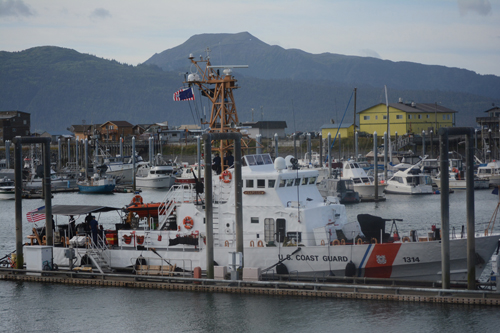On Tuesday morning, the cruise ship Norwegian Jewel pulled into the port of Juneau, its white hull containing nearly 3,500 passengers eager to debark and enjoy Alaska’s capital city.
From its stacks, only a thin stream of exhaust could be seen floating into the air. That hasn’t always been the case, the Alaska Department of Environmental Conservation alleges.
Between the start of 2010 and the end of 2014, the Norwegian Jewel allegedly violated the state’s clean air regulations 10 times. The Jewel’s alleged offenses are among 49 violations affecting 19 ships over five years.
DEC took 1,312 readings at locations including Juneau, Tracy Arm, Skagway and Ketchikan during that period. Most were fine.
The violations concern the opacity of the emissions from ship exhaust stacks — if the “smoke” is too dark, the ship’s owner can be fined and required to fix the problem. The regulations for those emissions are designed to keep Alaska’s air attractive to residents and visitors — including the passengers aboard ships found violating the standards.
DEC monitors cruise ships within three miles of shore to uphold the rules.
Jason Olds is an environmental program specialist with the DEC and monitors cruise ship pollution from his Juneau office.
For the past five years, the state has been waiting to see whether improvements in technology and techniques would reduce the number of violations.
Instead, the number went up. “2014 was a particularly bad year,” he said. “We saw in 2014 that things were not improving.”
The state’s list of violations shows seven in 2010, four in 2011, two in 2012, five in 2013, and 31 in 2014. Alleged violators include ships from Carnival Cruise Line, Norwegian Cruise Line, Holland America Line, Princess Cruise Line, Celebrity Cruises, Royal Caribbean International and Silversea Cruises.
The Alaska Marine Highway also appears on the list, from a single violation caused by the ferry Columbia in August 2014 in Juneau.
In that case, the ferry had just replaced its engines and was emitting more pollution than normal, ferry system spokesman Jeremy Woodrow explained. AMHS self-reported the problem and fixed it soon after the reading, and DEC declined to fine the state ferry system as a result.
It’s the only resolved case among the 49 on the state list, Olds said. “We were approaching kind of the statute of limitations with those 2010 cases,” he said. “It’s a kind of ‘we had to pull the trigger’ case in relation to these older cases.”
Violations can be caused by a variety of factors, Olds explained, including poorly operating engines, changes in fuel blends and even atmospheric conditions. At certain dewpoints, cruise ships emissions can turn into clouds of water vapor visible above Juneau.
The state’s pollution standard — measured against a complicated federal guideline — accounts for innocent exhaust like water vapor. When things like unburned fuel, soot or carbon go up in smoke, the state takes note.
Sometimes, the ship owner will turn over logs showing that the emission was a one-time event caused by maintenance. In most of those cases, the state will dismiss the violation.
For most of the 49 violations alleged by the DEC this week, there hasn’t been enough evidence to dismiss the case.
As such, the violations are being turned over to the Office of Law for settlement.
Olds said there isn’t a specific timeline for settling the violations, and details of particular cases remain confidential because the matter is unresolved.
In one resolved case, settled in January 2000, Royal Caribbean was ordered to pay $250,000 for a five-year cruise ship monitoring program.
James Brooks is a reporter for the Juneau Empire.


